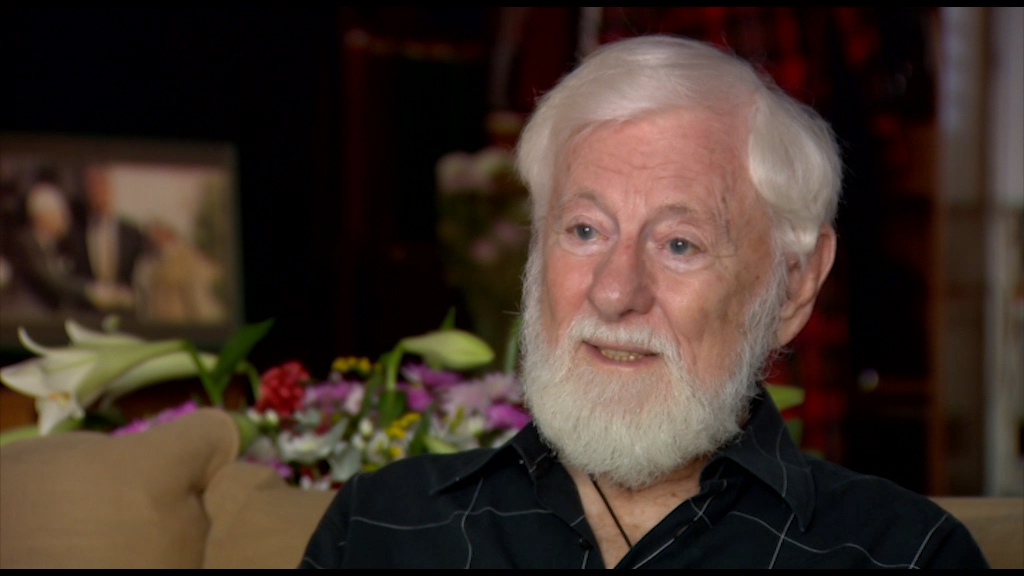NEXT STORY

The inhabitants of tent city
RELATED STORIES

NEXT STORY

The inhabitants of tent city
RELATED STORIES


|
Views | Duration | |
|---|---|---|---|
| 251. Legal restrictions on contact with PLO | 12 | 04:12 | |
| 252. Sailing on the Japanese Peace Boat | 11 | 04:01 | |
| 253. Briefing PLO leaders about Yitzhak Rabin | 13 | 03:40 | |
| 254. Staging a sit-in in a peace tent | 6 | 03:39 | |
| 255. The inhabitants of tent city | 5 | 05:20 | |
| 256. Genesis of Gush Shalom | 9 | 04:38 | |
| 257. Hamas welcomes back deported Islamic radicals | 5 | 03:35 | |
| 258. Yasser Arafat arrives in Gaza | 7 | 05:26 | |
| 259. Covering Yasser Arafat’s first press conference in Gaza | 6 | 03:59 | |
| 260. The different sides of Yasser Arafat | 12 | 03:27 |


I will just continue about Arafat. After Oslo − perhaps not, maybe before Oslo − after Rabin was elected Prime Minister for the second time he did something that really and truly outraged me: he expelled 415 Islamic activists sending them to Lebanon. The Lebanese did not let them enter and they remained stranded at the border, which annoyed me very much. There was a meeting of Peace Now at Tzavta about this issue, and what should be done. Very unusually, even I was invited to speak. Peace Now had some kind of objection against me from the first moment right up to the present day, and it really bothered them that I was around. But then, rather unexpectedly, there was an atmosphere of urgency. So I went up and said: 'Let's put up a tent and do a sit-in, perhaps even a hunger strike in front of Rabin's office in Jerusalem'. They talked and talked and talked, as peacemakers like to do, and in the end nothing came of it, nothing, no decision was reached. A communiqué or something like that was issued. This really irked me but my idea spread and so, a few days later, I was told that a group had organized in Taiybeh or Tira and had set up a tent. Of course, I rushed over there with Rachel and they had set up a tent as only the Arabs know how. They had several partners apart from us, although at the time we were not an organization. There was a group of secular Arabs from the Mayor of Tira, and the southern branch of the Islamic movement – no, all of it, also in the north, and the Bedouin from the Negev. For the Bedouin, setting up a tent is in their blood. They set up one big tent and two or three smaller ones and brought food. The Bedouin knew how to cook outdoors, and we gathered together in the tent.
אני אמשיך פשוט בערפאת. אחרי אוסלו, אולי לא, לפני אוסלו, אחרי שרבין נבחר לראשות הממשלה בפעם השנייה[1] הוא עשה דבר שמאוד-מאוד קומם אותי: הוא גירש 415 פעילים איסלאמיים ללבנון. הלבנונים לא נתנו להם להיכנס והם נשארו תקועים על הגבול, וזה הרגיז אותי מאוד. הייתה אסיפה של "שלום עכשיו" ב"צוותא" בעניין לטכס עצה מה לעשות. ובאופן מאוד-מאוד בלתי רגיל הזמינו גם אותי לשאת דברים. ל"שלום עכשיו" יש איזושהי התנגדות נגדי מהרגע הראשון ועד היום, וזה נורא הפריע להם שאני בסביבה. אבל אז באופן יוצא מן הכלל, הייתה אווירה של חירום. אז עליתי ואמרתי: "בואו נקים אוהל ונעשה שביתת שבת, אולי גם שביתת רעב, מול המשרד של רבין בירושלים”. ודיברו, דיברו, דיברו כפי שאנשי שלום אוהבים לעשות, ובסוף לא יצא כלום, שום דבר, לא יצאה שום החלטה. פרסמו גילוי דעת או משהו כזה. וזה אכל אותי. והרעיון הזה התפשט ויום אחד, כמה ימים אחרי זה מודיעים לי שהתארגנה קבוצה בטייבה או בטירה ומקימים אוהל. ואני רצתי לשם כמובן עם רחל והם הקימו אוהל כמו שערבים יודעים להקים. האוהל הזה היו לו שותפים אחדים, חוץ מאותנו. "אותנו" אז לא היה לנו שום ארגון, וקבוצה של ערבים חילוניים מראש העיר טירה והתנועה האיסלאמית הדרומית, לא, כולה, גם הצפונית, ובדואים מהנגב. ובשביל הבדואים להקים אוהל זה תוכן חייהם ממש. הקימו אוהל אחד גדול ושניים-שלושה יותר קטנים והביאו אוכל. הבדואים ידעו איך לבשל תחת כיפת השמיים, והתכנסנו באוהל.
Uri Avnery (1923-2018) was an Israeli writer, journalist and founder of the Gush Shalom peace movement. As a teenager, he joined the Zionist paramilitary group, Irgun. Later, Avnery was elected to the Knesset from 1965 to 1974 and from 1979 to 1981. He was also the editor-in-chief of the weekly news magazine, 'HaOlam HaZeh' from 1950 until it closed in 1993. He famously crossed the lines during the Siege of Beirut to meet Yasser Arafat on 3 July 1982, the first time the Palestinian leader ever met with an Israeli. Avnery was the author of several books about the Israeli-Palestinian conflict, including '1948: A Soldier's Tale, the Bloody Road to Jerusalem' (2008); 'Israel's Vicious Circle' (2008); and 'My Friend, the Enemy' (1986).
Title: Staging a sit-in in a peace tent
Listeners: Anat Saragusti
Anat Saragusti is a film-maker, book editor and a freelance journalist and writer. She was a senior staff member at the weekly news magazine Ha'olam Hazeh, where she was prominent in covering major events in Israel. Uri Avnery was the publisher and chief editor of the Magazine, and Saragusti worked closely with him for over a decade. With the closing of Ha'olam Hazeh in 1993, Anat Saragusti joined the group that established TV Channel 2 News Company and was appointed as its reporter in Gaza. She later became the chief editor of the evening news bulletin. Concurrently, she studied law and gained a Master's degree from Tel Aviv University.
Tags: Jerusalem, Yitzhak Rabin
Duration: 3 minutes, 39 seconds
Date story recorded: October 2015
Date story went live: 26 June 2017